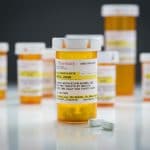Stimulant drugs are used for a variety of reasons, especially to help treat those suffering from attention deficit hyperactivity disorder (ADHD) or narcolepsy. Although there are other medical uses, stimulants are primarily used to treat ADHD.
Examples of prescription stimulants include:
- Adderall (amphetamine and dextroamphetamine)
- Ritalin (methylphenidate)
- Dexedrine (dextroamphetamine)
- Concerta (methylphenidate)
- Vyvanse (lisdexamfetamine)
Unfortunately, stimulants have the potential to be abused, including both legal and illegal stimulants.
Illegal stimulants include drugs such as ecstasy, cocaine, and methamphetamine. Any type of stimulant drug can cause a number of short-term and long-term side effects.
How Stimulants Work
ADHD medications increase the activity of neurotransmitters in the brain that affect the nervous system. When used, prescription stimulants can elevate mood as well as increase concentration.
When stimulants are taken, the brain produces an increase in dopamine and norepinephrine. As the neurotransmitter is affected, a person may experience increased energy, mood, and concentration.
Dopamine allows one to experience a number of rewarding side effects such as when ADHD patients are able to concentrate and those suffering from narcolepsy are able to stay awake. Norepinephrine, however, affects blood vessels, heart rate, and blood pressure.
Short-Term Side Effects Of Stimulants
When a stimulant is taken, there may be immediate effects depending on the route of administration. Some of the short-term side effects of stimulant use include:
- difficulty sleeping
- loss of appetite
- elevated body temperature
- panic
- irritability
- high blood pressure
- increased heart rate
- hallucinations
Long-Term Side Effects Of Stimulants
There are long-term effects of stimulant use or abuse that can cause a number of health issues. In fact, these side effects may occur after a period of long-term use:
- impotence
- increased blood pressure
- asthma
- extreme loss of appetite
- nutritional deficiencies
- irregular heartbeat
- insomnia
- seizures
- mood swings
The use of stimulants over a long period of time, especially when abused, can create a number of health hazards.
During long-term use, a person’s tolerance to the drug can build up. This results in the body requiring larger doses of stimulant drugs to reach the desired sensations. This can lead to an increased risk of overdose.
Stimulant Overdose
A stimulant overdose can be a life-threatening emergency. If you suspect an overdose has occurred, contact 911 immediately.
Those suffering from an overdose of stimulant medications may experience:
- tremors
- heart attack
- confusion
- breathing problems
- psychosis
- fever
- muscle pain
- panic
- high blood pressure
- vomiting
- diarrhea
- nausea
- abdominal cramps
Taking high doses of stimulants can also lead to paranoia, anxiety, and a range of mental health concerns, according to the Substance Abuse and Mental Health Services Administration (SAMHSA).
Cardiovascular Problems
According to the National Institute on Drug Abuse (NIDA), abusing prescription stimulants can lead to a high body temperature, an irregular heartbeat, or even heart failure. These symptoms can be made worse by a stimulant overdose.
A number of cardiovascular problems can take place due to body temperature fluctuations and potential hyperthermia. In fact, kidney, liver, and cardiovascular failure can occur, potentially leading to an early death.
Addiction, Dependence, & Withdrawal
If you abuse stimulant medications, you may develop dependence and addiction. This mean that, once you stop use, you may develop various withdrawal symptoms that range in severity and can include:
- drug cravings
- fatigue
- restlessness
- depression
- sleeping difficulties
According to the United States Food and Drug Administration (FDA), stimulants should only be taken as prescribed by your doctor and never abused.
Stimulant Addiction Treatment
Substance use treatment programs, including options for stimulant abuse and addiction, take place in either inpatient or outpatient settings.
Inpatient treatment requires you to live in a rehab center throughout the program, while outpatient treatment requires you to travel daily or weekly for treatment sessions.
Treatment services in both settings likely include behavioral therapy, group therapy, mental health counseling, peer support, and skill-building resources.
For information on our outpatient treatment program, please contact us today.
Written by
Northeast Addition Editorial Team
©2024 Northeast Addition Center | All Rights Reserved
This page does not provide medical advice.

